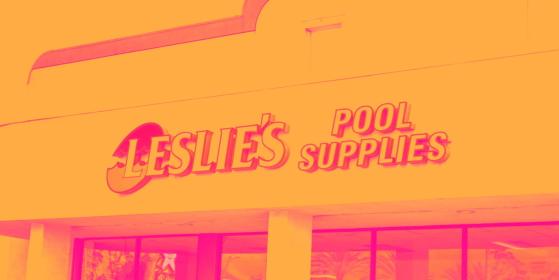As the Q3 earnings season comes to a close, it’s time to take stock of this quarter’s best and worst performers in the specialty retail industry, including Leslie's (NASDAQ:LESL) and its peers.
Some retailers try to sell everything under the sun, while others—appropriately called Specialty Retailers—focus on selling a narrow category and aiming to be exceptional at it. Whether it’s eyeglasses, sporting goods, or beauty and cosmetics, these stores win with depth of product in their category as well as in-store expertise and guidance for shoppers who need it. E-commerce competition exists and waning retail foot traffic impacts these retailers, but the magnitude of the headwinds depends on what they sell and what extra value they provide in their stores.
The 4 specialty retail stocks we track reported a mixed Q3. As a group, revenues were in line with analysts’ consensus estimates while next quarter’s revenue guidance was 2.5% below.
Amidst this news, share prices of the companies have had a rough stretch. On average, they are down 19.8% since the latest earnings results.
Weakest Q3: Leslie's (NASDAQ:LESL)
Named after founder Philip Leslie, who established the company in 1963, Leslie’s (NASDAQ:LESL) is a retailer that sells pool and spa supplies, equipment, and maintenance services.Leslie's reported revenues of $397.9 million, down 8% year on year. This print fell short of analysts’ expectations by 1.8%. Overall, it was a disappointing quarter for the company with a significant miss of analysts’ EBITDA and gross margin estimates.
Jason McDonell, Chief Executive Officer, said, “Our fourth quarter results were in line with our revised expectations on the top-line, and we saw strong performance in our Pro segment with some continued softness in store traffic and larger-ticket and discretionary categories. Profitability was affected by deleverage from the sales decline and a one-time contract item, though we have remained disciplined on SG&A expenses.”
Leslie's delivered the weakest performance against analyst estimates and slowest revenue growth of the whole group. Unsurprisingly, the stock is down 39.9% since reporting and currently trades at $2.11.
Is now the time to buy Leslie's? Find out by reading the original article on StockStory, it’s free.
Best Q3: National Vision (NASDAQ:EYE)
Operating under multiple brands, National Vision (NYSE:EYE) sells optical products such as eyeglasses and provides optical services such as eye exams.National Vision reported revenues of $451.5 million, up 2.9% year on year, in line with analysts’ expectations. The business had a very strong quarter with an impressive beat of analysts’ EPS and EBITDA estimates.
National Vision achieved the fastest revenue growth among its peers. Although it had a fine quarter compared its peers, the market seems unhappy with the results as the stock is down 14.3% since reporting. It currently trades at $10.47.
Tractor Supply (NASDAQ:TSCO)
Started as a mail-order tractor parts business, Tractor Supply (NASDAQ:TSCO) is a retailer of general goods such as agricultural supplies, hardware, and pet food for the rural consumer.Tractor Supply reported revenues of $3.47 billion, up 1.6% year on year, in line with analysts’ expectations. Still, it was a a satisfactory quarter as it posted full-year EPS guidance exceeding analysts’ expectations.
As expected, the stock is down 6.8% since the results and currently trades at $54.50.
Petco (NASDAQ:WOOF)
Historically known for its window displays of pets for sale or adoption, Petco (NASDAQ:WOOF) is a specialty retailer of pet food and supplies as well as a provider of services such as wellness checks and grooming.Petco reported revenues of $1.51 billion, up 1.2% year on year. This print topped analysts’ expectations by 0.7%. Zooming out, it was a mixed quarter as it also recorded a solid beat of analysts’ EPS estimates but EBITDA guidance for next quarter missing analysts’ expectations significantly.
Petco achieved the biggest analyst estimates beat among its peers. The stock is down 18.4% since reporting and currently trades at $4.
Market Update
Thanks to the Fed's series of rate hikes in 2022 and 2023, inflation has cooled significantly from its post-pandemic highs, drawing closer to the 2% goal. This disinflation has occurred without severely impacting economic growth, suggesting the success of a soft landing. The stock market has thrived in 2024, spurred by recent rate cuts (0.5% in September and 0.25% each in November and December), and a notable surge followed Donald Trump's presidential election win in November, propelling indices to historic highs. Nonetheless, the outlook for 2025 remains clouded by the pace and magnitude of future rate cuts as well as potential changes in trade policy and corporate taxes once the Trump administration takes over. The path forward is marked by uncertainty.Want to invest in winners with rock-solid fundamentals? Check out our and add them to your watchlist. These companies are poised for growth regardless of the political or macroeconomic climate.
This content was originally published on Stock Story

